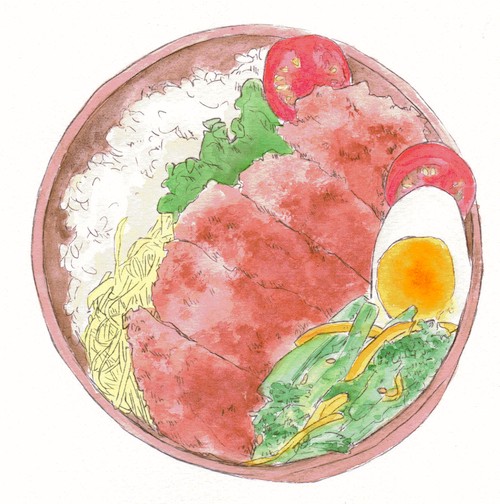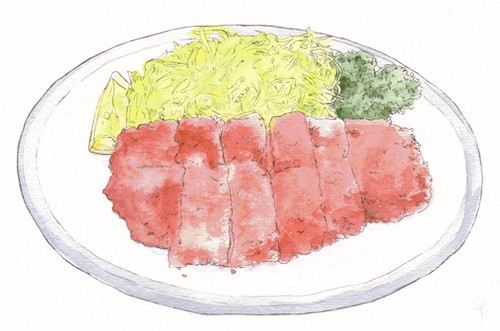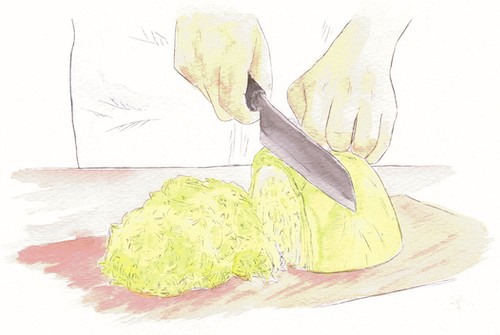
Why katsu is paired with shredded cabbage in Japan
I was at the train station on my way home when my mom sent me a text about dinner — everyone else was out, and it seemed like it was just going to be the two of us.
What are you in the mood for? We can go out for dinner!
It didn’t take long for me to reply — we decided to go to one of my favorite restaurants in Shinjuku for fresh tonkatsu, or Japanese pork cutlet. I hadn’t had one in a while but was craving it after seeing an ad for it in our mailbox. “Served with fresh spring cabbage!” the newsletter read. It seems that the season for it has come around again.
I wondered why it’s always paired with cabbage. It’s not just pork cutlets at restaurants; a lot of fried foods tend to be served with raw cabbage, even when made at home. I asked my mom, but she wasn’t sure, so I did a bit of digging.

Why katsu is always paired with shredded cabbage
Apparently, the pork cutlet was brought into Japan during the Meiji Era, in 1899 by a restaurant called Rengatei in Ginza, Tokyo. But when it was first served there, it was not served with raw shredded cabbage. In fact, the dish more closely resembled the schnitzel you’d find in Vienna or Germany, served with a side of potatoes and sautéed vegetables.
The restaurant was doing well, but due to the mandatory draft for the Russo-Japanese war in 1904, the owner suddenly found his kitchen short of hands. To save time, he changed the menu so that the pork cutlet would be served with raw shredded cabbage, rather than cooked vegetables.
Turns out the raw cabbage was a lot more popular— diners liked how it freshened the mouth and it didn’t make them feel so heavy or sluggish after. The restaurant gained a lot more popularity after the switch, and other restaurants began to serve their tonkatsu with shredded cabbage. Now, Japanese pork cutlets with shredded cabbage is the classic way to serve the dish.
Health benefits of cabbage
The freshness of the mouth isn’t just a placebo effect. The pork cutlet is deep-fried, so, naturally, it’s a greasy food that’s not so good for our stomach, but when it’s eaten with raw cabbage, this helps aid digestion.
The dietary fiber in cabbage suppresses and slows the absorption of fat and helps feed healthy gut bacteria to keep your digestive system functioning well. Cabbage is also rich in an enzyme known as s-methyl methionine, also known as Vitamin U, which gently protects the gastrointestinal membrane of the stomach. This enzyme is particularly abundant in cabbage but is altered with high heat, so to get the full benefits it should be consumed raw. As a bonus, cabbage is also incredibly high in Vitamin C — about 3 large leaves is enough to get your daily requirement.

A healthy diet is a balancing act
A sustainable, healthy diet is a balancing act, and is not about eliminating certain ingredients or foods that are “bad” for us — in fact, this self-restraint only sets us up for excess stress and perpetuates guilt when we can’t enjoy the foods we love.
Self-restraint diets by design are set up for failure, and so instead we need to balance what we eat in ways that don’t deprive us. We can still enjoy fried foods and continue to meet our major health goals as long as we stay mindful of how we eat these foods.
The key to dishes like tonkatsu: Don’t eat too much, and pair it with vegetables — preferably cabbage.


If you enjoy good food and would like to know more about how to create balanced Japanese meals at home, feel free to email me at kokumura@kakikata.space! I look forward to hearing from you! 😊 Best regards, Kaki